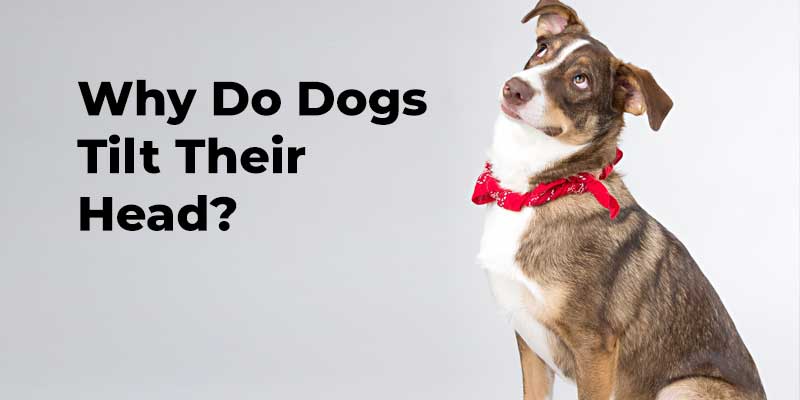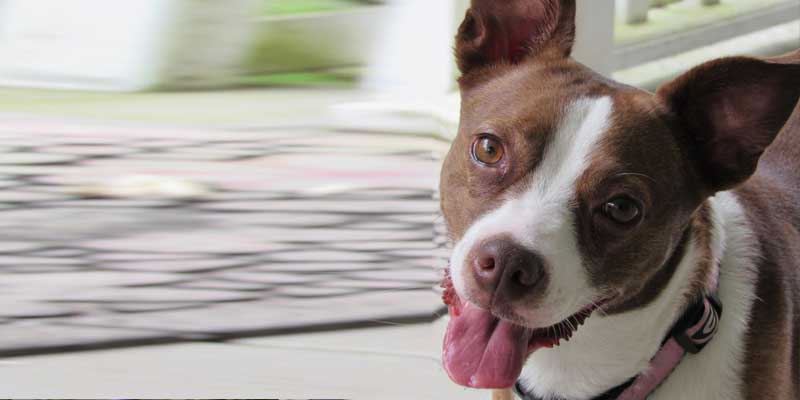
If someone asks me, I would say dogs are certainly the most amiable pets on earth. Their flamboyant behavior can probably win the rudest of all human hearts effortlessly, and undoubtedly, they are the most loyal of all creatures in the world.
Best Selling Dog Treats
Last update on 2025-02-09 / Affiliate links / Images from Amazon Product Advertising API
But oftentimes, we get confused by some of their strange behaviors, though these make them even cuter. One of such conducts is the head tilt, which is common mostly in all dog breeds. Most of us tend to brainstorm the reasons behind it. If this seems similar to you as well, do not head back, keep reading !!
Ample reasons contribute to such conduct, and in this article, we shall know four reasons behind this behavior of a dog.
Significance of Dog’s Body Language

Barks, whines, and growls make up a large part of canine communication; therefore, it’s crucial to understand what they imply. Dogs, however, frequently use nonverbal body language to express themselves. This can lead to a lot of miscommunication between humans and dogs.
Recognizing a dog’s body movements are complex and often baffling. It’s also in direct opposition to what the same signal means to a human, like yawning or turning away. We must examine a dog’s entire body from mouth to tail — along with eye contact — to fully comprehend what it is communicating through its body language.
For instance, tail-wagging may indicate that a dog is joyful, as most people believe. But, a tail-wagging dog can also indicate a multitude of emotions, from happiness to agitation. As a result, it’s critical to examine the dog’s general posture and body motions before assigning meaning.
Also read: Why Dogs Chase Tails
Many people take the help of dog trainers or experts to better understand their dearest pets. However, if we observe our dog meticulously and get some basic knowledge of body signs, we should be able to understand our dog.
Therefore, by now, it must be clear that tilting the head is also a body sign that implies certain moods or emotions of a dog. It does not signify only one single meaning; several reasons can be.
4 Reasons Behind the Head Tilt of a Dog
As said earlier, numerous reasons are there behind these postural behaviors; however, these are the four most common reasons among them:

1. For Better Hearing:
For us, it might be peculiar to accept that head tilt helps dogs in better listening. But there’s is a distinction between the hearing process of a human and a dog. Any person with typical hearing ability can recognize sounds no matter where it originates, while the directional hearing of a dog is restricted.
The external human ear is designed to pick up the sound so well that it does not require a person to turn toward it to hear it. Because a person’s ability to perceive sound is unaffected by whether it comes from the front, rear, left, or right, we don’t have to spin to hear someone calling from behind.
In contrast, dogs don’t share this trait. Due to their ear flaps, dogs have a sound barrier preventing them from detecting sound. Therefore, they most often need to alter their head’s position when they hear any sound.
Fortunately, the canine ear flap (pinna) is flexible, allowing the dog to make the required adjustments to focus on the precise position of the sound. Different breeds encounter various difficulties.
The ear flap of a German Shepherd barely covers the backside of the canal, limiting the detection of noises from behind. A Cocker Spaniel’s ear flaps are thick and completely cover the ear canals, obstructing sound transmission from all directions.
2. For Better Visibility:
Vision also influences head tilting most often. Dogs may tilt their heads while looking at their owner’s face because their muzzles may obscure their vision. We can get a good idea of what it’s like to see the world via a muzzle by holding our fists in front of the nose. When watching someone speak, the muzzle will obscure the lower half of their face, but we can see it more clearly if we tilt our heads to one side.
Dogs can understand our facial expressions in addition to hearing emotional cues in our voices. When dogs cock their heads to the side, they are seeking to obtain a better view of human mouths, which are the source of our most expressive facial expressions.
Greyhounds, for example, demonstrated more head-tilting conduct toward their owners than Pugs, which have flatter faces. As a result, head shape and muzzle size may have an impact on head tilting. Nonetheless, the head of the majority of dogs that have flat faces tends to be inclined, which indicates that snout issues might not be the only problem.
In addition to snout length, there is another aspect too that we may consider. At certain ages, the animal’s visual acuity appears to be linked to head tilting as well. As a result, paying attention to head tilting throughout a dog’s life could be instructive.
3. To Get Affection:

Dogs tilt their heads for a variety of reasons, and humans tend to appreciate the adorableness of this conduct through rewards. We pat our dogs on the head when their heads are tilted, speak kindly to them, and smile at them when they do so.
There’s no denying that dogs crave attention and acknowledgment. When we are patting or hugging our dog that can be one of the happiest feelings of the innocent pet. And they probably would never miss any opportunity to get love from his owner.
Dogs cock their heads for a variety of reasons, one of which is that we train them to do so through positive reinforcement. Our delight at the adorable dog head tilt encourages us to repeat it, so the more we gush over it, the better it feels to us!
However, giving love to our dogs is also better for their mental health. So, if we feel that our dog is tilting its head just for the sake of affection, we should never reject them.
4. Health Issue:
Though dogs love to get attention by tilting their head, frequent head tilts can be a matter of concern, and that brings us to this point.
The majority of head tilts are caused by communication, but certain dogs will develop medically induced tilts. In most cases, these tilts do not appear to be charming, and the dog’s head remains inclined for an extended amount of time.
If our dog’s head is tilted or shakes uncontrollably, it’s time to take them to the veterinarian. Frequent head tilting might be caused by ear issues or vertigo.
We may notice additional indicators that alarm us, such as the dog being off-balance, falling easily, or showing symptoms of an ear infection. We should take our dog to the veterinarian right away if the head-tilt appears to be anything other than a form of communication.
Conclusion
To conclude, we can say that tilting head is generally a common behavioral expression of the dogs, whether they are trying to communicate or get some affectionate pats. However, listening and visionary issues are most likely to be the reasons for the head tilt of dogs.
Of course, experts have profuse reasons for the different body movements of dogs, including head-tilting. But, only a pet parent is probably the best person who can figure out his dog’s moods and emotions.
Anyway, unless our cute puppy or dog is sick, we’re likely to find it attractive and entertaining, no matter whatever reason is there behind tilting its head. Hence, the act promotes human-dog bonding.







